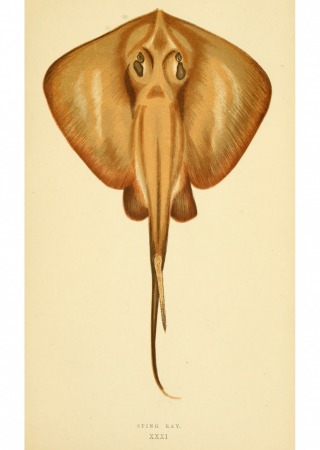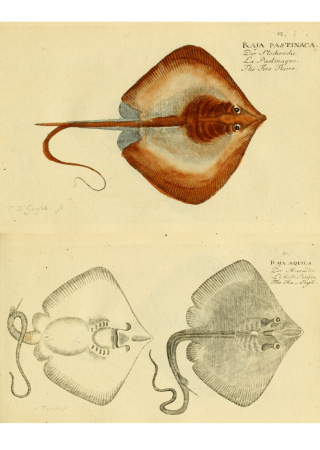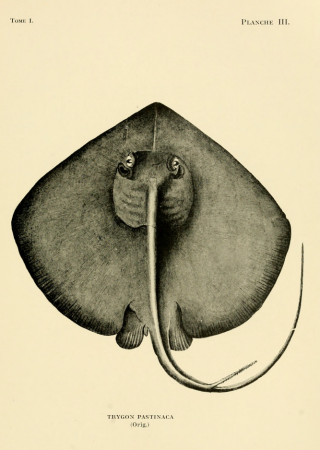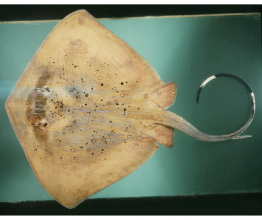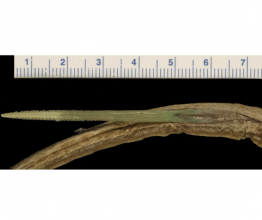Stingray
- ...the Roman philosopher Pliny described the stingray as so poisonous, that if the barb is stabbed into the root of a tree, the tree will die?
- ...in September of 2006, a more than 100 kg. stingray killed Steve Irwin, known as the "crocodile hunter", by stabbing him in the heart?
- ...the stingray's stinger has barbs, which holds the stinger in the wound?
- ...the stinger is often broken off during a strong blow by the ray's tail, but it quickly grows a new one?
Basic information:
Phylum – chordates (Chordata)
Class – cartilaginous fish (Chondrichthyes)
Maximum length – 2.5 m
Food – mollusks, crustaceans
Distribution – warm seas all over the world
Type of poison – wide range of enzymes
Distinguishing marks:
A ray's body is flattened, adapted to life on the ocean bottom, only the back of the head is slightly raised. In outline, the body is roughly circular. A long tail is tipped with sharp stinger. The ray's mouth is on the underside of the body.
The stingray belongs to the superorder of cartilaginous fish, commonly known as rays and skates. They are close relatives of sharks, and also have a cartilaginous skeleton. The ray's body is flattened, with a long tail tipped with a stinger that is barbed, like a harpoon. The sting is used for self-defense. The surface of the stinger is covered with poisonous mucus, produced in poison glands. When stung by a ray, the recommended treatment is to immerse the affected area into hot water, as hot as the patient can tolerate. This reduces the pain caused by the poison and simultaneously neutralizes its effects. If the sting is not removed from the wound, it can cause necrosis.

